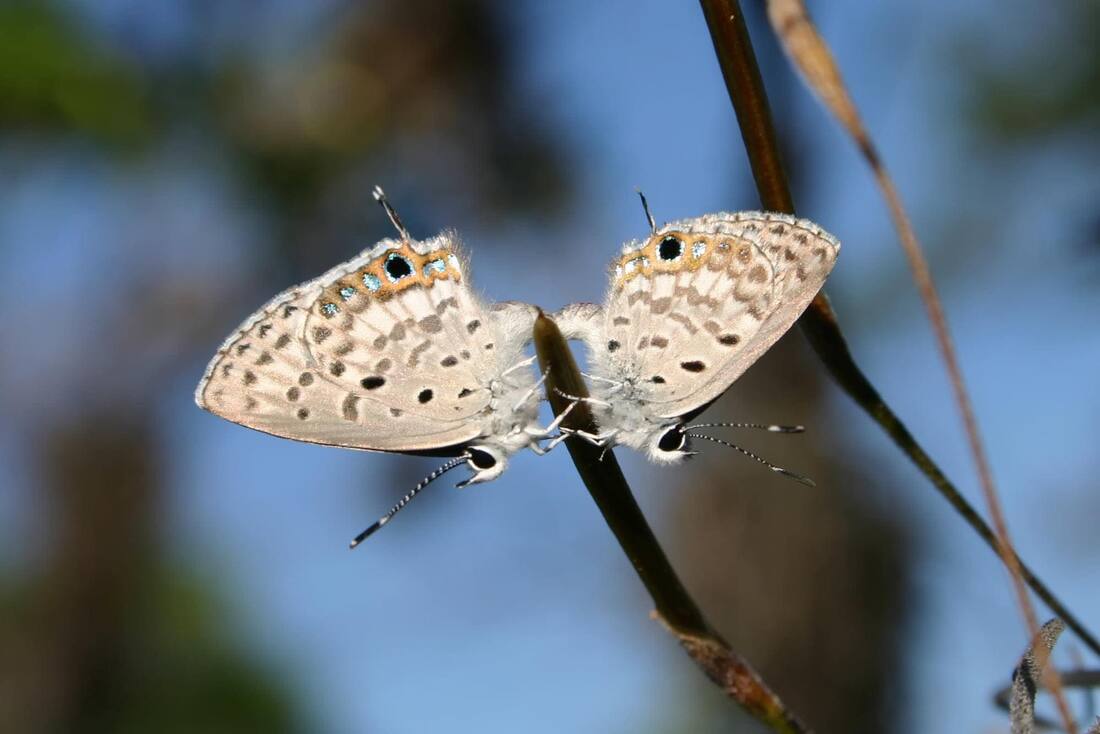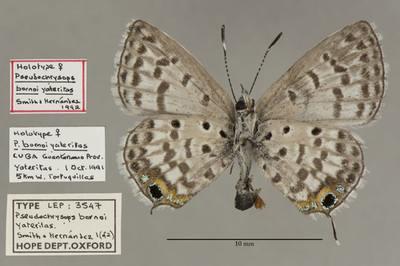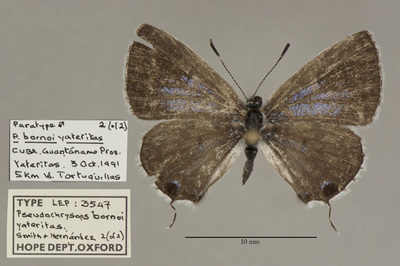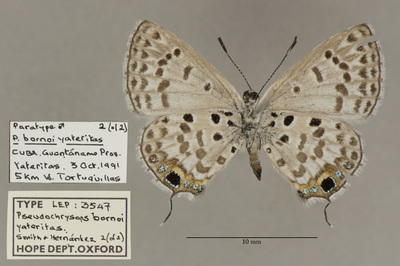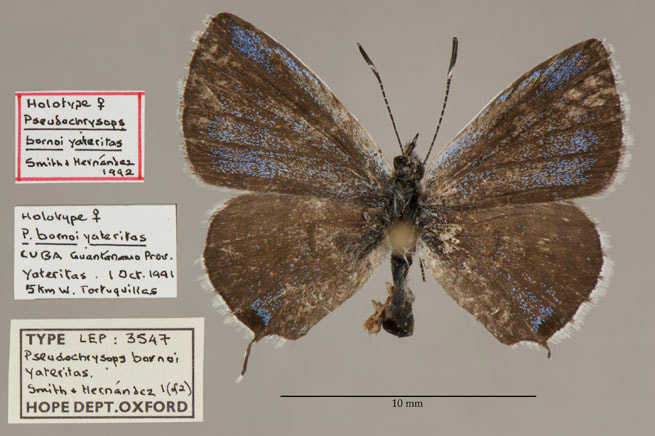Lycaenidae : Polyommatinae
Pseudochrysops bornoi Smith & Hernández, 1992
Antillean Blue
Pseudochrysops bornoi Smith & Hernández, 1992
Antillean Blue
Description and Similar Species: Wingspan 22-24mm. Sexes similar but females larger. It rather resembles a Hairstreak Theclinae due to the single long tail on each hindwing but the pattern of spots on the underside is definitely that of a Polyommatinae.
Range: Known only from Hispaniola, Puerto Rico and at just one site in Cuba. On all three islands it is known only from xeric lowland areas at or near sea level. Each of these three populations have been assigned subspecies status with P. bornoi yateritas found on Cuba, P. b. bornoi found on Hispaniola and P. b. escobioi on Puerto Rico.
Status: It was first discovered on Cuba in October 1991 at Yateritas, Guantanamo Province. It is not known if or how often it has been seen there since and it has never been seen anywhere else in Cuba. The Yateritas site is just above sea level and is an area of flats covered with Sesuvium and scattered Acacia. In Cuba it was seen flying in October and in Dominican Republic it has been seen in March, June/July and December so it would appear to be continuously brooded.
Nectar Plants: The only ones known in Cuba are Acacia farnesiana and Pithecellobium.
Larval Foodplants: Unknown.
Range: Known only from Hispaniola, Puerto Rico and at just one site in Cuba. On all three islands it is known only from xeric lowland areas at or near sea level. Each of these three populations have been assigned subspecies status with P. bornoi yateritas found on Cuba, P. b. bornoi found on Hispaniola and P. b. escobioi on Puerto Rico.
Status: It was first discovered on Cuba in October 1991 at Yateritas, Guantanamo Province. It is not known if or how often it has been seen there since and it has never been seen anywhere else in Cuba. The Yateritas site is just above sea level and is an area of flats covered with Sesuvium and scattered Acacia. In Cuba it was seen flying in October and in Dominican Republic it has been seen in March, June/July and December so it would appear to be continuously brooded.
Nectar Plants: The only ones known in Cuba are Acacia farnesiana and Pithecellobium.
Larval Foodplants: Unknown.
